The SilverStone SX800-LTI SFX-L 800W PSU Review: Big PSU, Small Niche
by E. Fylladitakis on January 18, 2018 9:00 AM EST- Posted in
- Cases/Cooling/PSUs
- SilverStone
- SFX
- SFX-L
External Appearance
In terms of specificiations, it's important to point out that the SX800-LTI is not a product that is fully compliant with the SFX specifications. As with nearly all high output SFX designs, the SX800-LTI is an “SFX-L” PSU that meets all of the SFX specifications, except from the length. It is the longest SFX unit that we have ever seen to this date, measuring 125 (W) × 63.5 (H) × 130 (D) mm (4.92" x 2.5" x 5.12"), a good 30 mm deeper than a SFX-compliant unit. This added length significantly limits the compatibility of the PSU, as a large percentage of the SFX case designs do not offer that much clearance.
Typically for a SilverStone PSU, the design of the SX800-LTI is simple, yet not aesthetically apathetic. A satin black paint with good anti-fingerprint properties covers the chassis and the company logo is subtly embossed at the top side of the PSU. Both the fan and the finger guard are black, with no lighting, but with a metallic crest featuring the company’s logo covering the fan’s engine. A dark sticker with the electrical specifications and certifications of the PSU can be found on its left side. On the right side of the chassis, which usually is out of the view of case windows, SilverStone placed the necessary white production (serial, version) and quality control stickers.
It is noteworthy to mention that SilverStone managed to fit an on/off switch next to the AC cable receptacle on the rear side of the SX800-LTI, something not very common on high power SFX designs. The front side is covered by the asymmetrically placed cable connectors. The placement of the rightmost two connectors suggests that this chassis was not initially meant to have that many connectors and that they were added by the designer after they managed to squeeze the components for an 800W behemoth in that small chassis. All of the cable connectors except from those of the ATX cable are covered with plastic protective caps.
Internal Design
A major advantage of the SFX-L chassis is that it allows for 120 mm fans to be installed, a necessity for consumer-grade products where sound pressure must be kept down to civil levels. Globe supplies the low profile 120 mm fan that we found in the SX800-LTI. It is a standard sleeve bearing model with a maximum speed of 2300 RPM at 12 Volts. Many enthusiasts will voice concerns regarding the reliability of such a high speed fan in comparison to other bearing designs, but SilverStone generally prefers to use sleeve bearing fans because of their lower noise output, even for their top-tier products. At the very least, Globe is a company with a proven high reliability record.
Most people would reasonably presume that the SX800-LTI is just a beefed-up or upgraded version of the SX700-LPT. That is not the case as the SX800-LTI is an entirely different design and is also coming from a different OEM. Enhance Electronics is behind the creation of the SX800-LTI, the OEM behind most of SilverStone’s PSUs.
The platform that the SX800-LTI is based on is not simple, yet not particularly advanced either. It is based on a proven recipe, with an LLC resonant half-bridge inversion circuit on the primary side and a typical single (12V) converter on the secondary. The minor rails are being generated via DC-to-DC converters. We have seen the same core design in computer PSUs of all efficiency ranges, including 80Plus Bronze certified units. Enhance Electronics managed to reach 80Plus Titanium efficiency levels by simply replacing the typical active electronic parts with their first-rate counterparts that have minimal energy losses. However, these ultra-high efficiency parts are many times more expensive than the typical parts we typically find in mainstream units, significantly increasing the production cost of the PSU.
Most of the filtering stage parts are behind the AC receptacle, with a few onto the main PCB. There are a total of four Y capacitors, three X capacitors, and two filtering inductors. The single rectification bridge is sharing the same large heatsink as the APFC and primary inversion side components. The passive PFC components are a large shielded filtering inductor and two 420V/270μF capacitors from Rubicon. The capacitors are the largest SilverStone could fit in there and they are practically touching the heatsink, which is worrying considering that temperature is one of the primary factors affecting the longevity of capacitors.
Despite the large heatsink housing the primary side components, there is virtually no heatsink for the secondary side conversion MOSFETs. They are mounted on the underside of the PCB and they are so efficient that the chassis of the PSU alone provides more than enough heat dissipation for them to operate seamlessly even when heavily loaded. The capacitors on the secondary side are a mix of electrolytic and solid-state products, and are coming from several different companies. We identified Rubycon, Nippon Chemi-Con, Nichicon, and Unicon capacitors in the mix. The first three companies are very well known and respected. Unicon on the other hand is not such a popular manufacturer, but they too are a Japanese-based company.


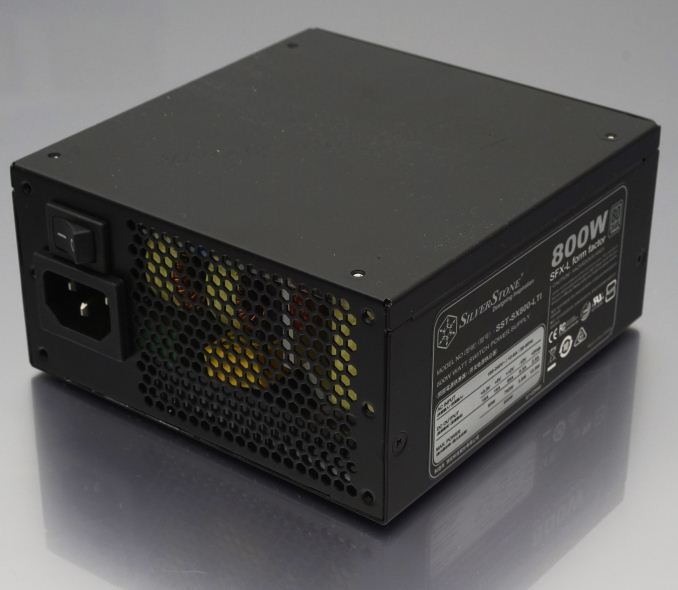
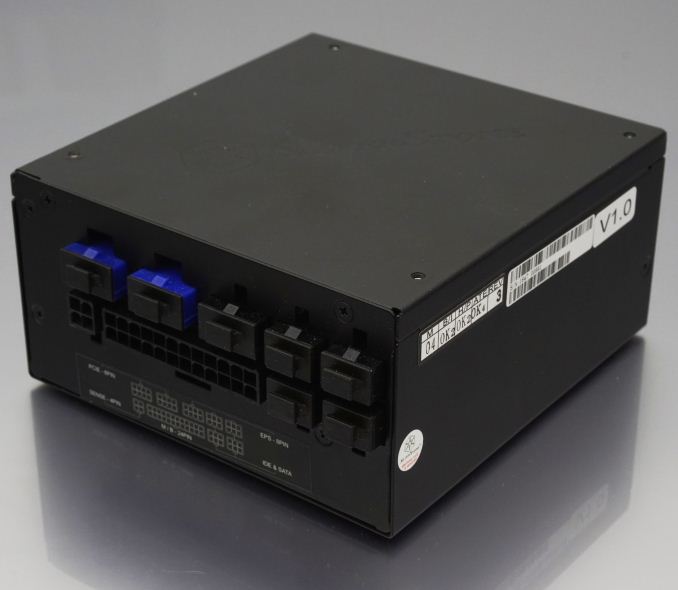
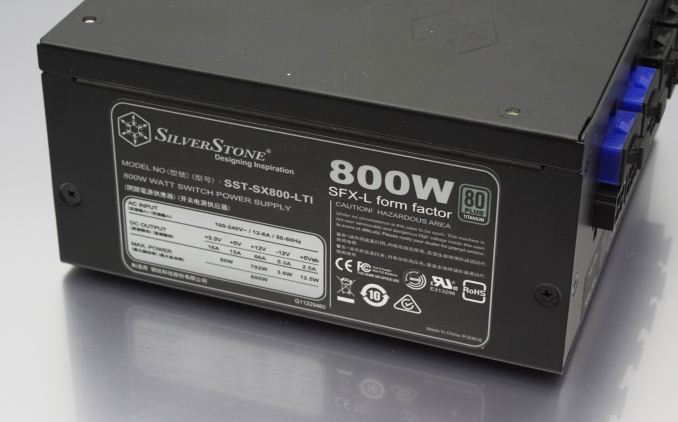
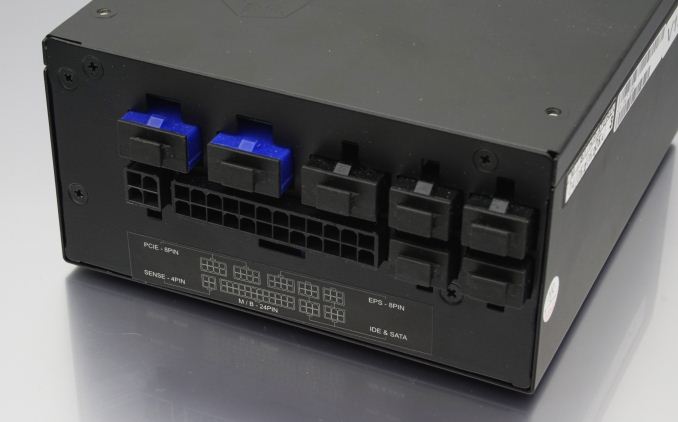
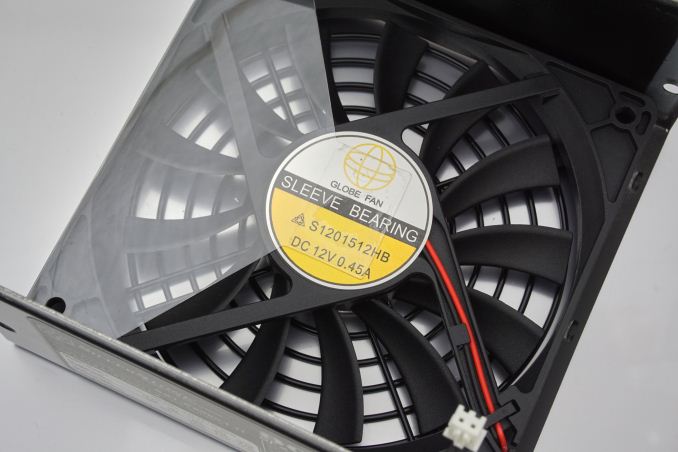
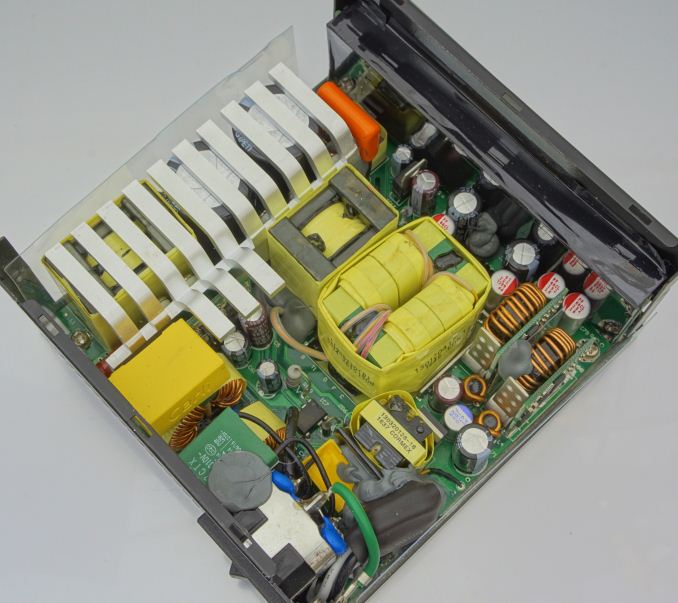
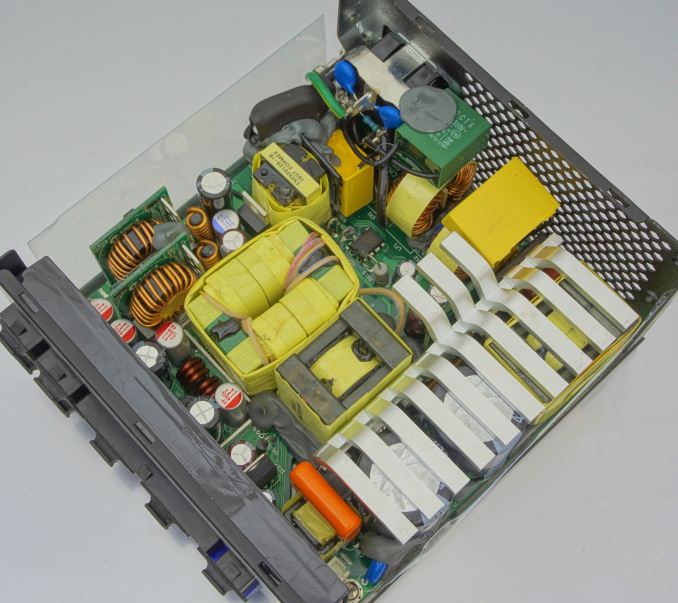
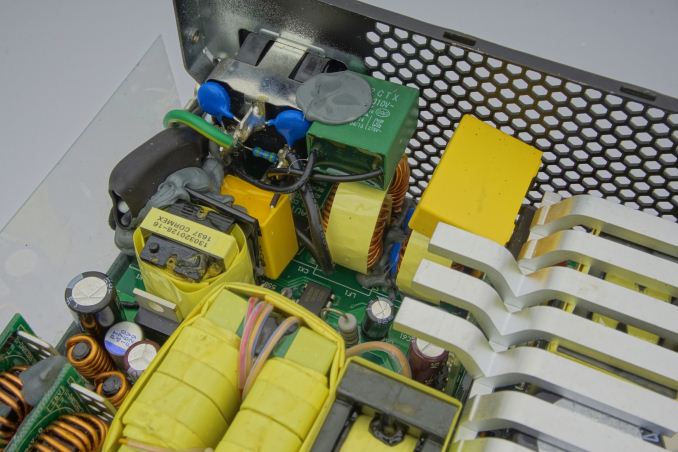

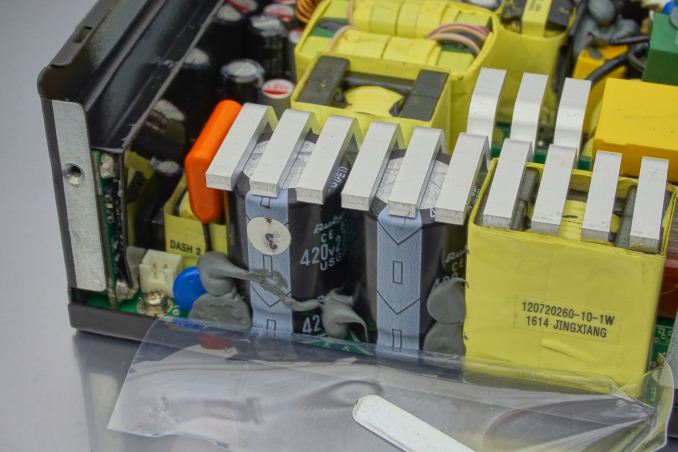








25 Comments
View All Comments
Meaker10 - Friday, January 19, 2018 - link
It can help room temperatures and with a small forn factor case it could make a difference to internal temperatures.sonny73n - Friday, January 19, 2018 - link
@meaker10Huh? PSU & temperatures? What?!
DanNeely - Friday, January 19, 2018 - link
All the power lost due to PSU inefficiency is extra heat added to the room. When it's cold it works like supplemental furnace/etc (if electric heat is cost effective depends on what the other heat source is); in the summer it's just more heat for the AC to push out of the building.meacupla - Saturday, January 20, 2018 - link
But if a 600W PSU is pulling 90% efficiency at 400W, where as this 800W PSU is pulling 94% efficiency at 400W, the 600W would be consuming 444W, versus the 800W would be consuming 425W.A 19W difference is hardly going to result in a noticeable difference inside the case, since PSUs only expel heat.
Macpoedel - Tuesday, January 23, 2018 - link
According to Silverstone's charts the 500W SFX-L PSU is 91% efficient at a 400W load (with a 230V AC input voltage), this 800W PSU is 95 % efficient at the same load. That comes down to 439W and 421W from the wall, let's take 20W for simplicity.If the PC were to have a continuous load of 400W all year long, that makes 175.2 kWh. In my country electricity is pretty expensive, around 0.21€/kWh (probably a bit more now, 0.21 was a few years ago).
175.2 kWh would then cost €36.7, but the price difference between the 500W and 800W variant is around €100, so you'd need about 3 years of continous load at 50% to benefit from the better efficiency.
Let's also assume this PSU isn't powering a mining rig but a workstation, that gets used around 8 hours a day, that makes 9 years before the higher efficiency pays off. I doubt many PSU's are used for longer than that.
Also, in most cases a 400W continuous load is a very unrealistic assumption, most pc's idle most of the time, even workstations (and this is not a server PSU). Below 20% load, both PSU's have pretty much the same efficiency.
So when exactly does the higher efficiency pay off for pc's that don't have a continuous load? Pretty much never...
Much more important are the warranty and component quality, and it's not like the 800W PSU is so much better in those regards, it's not going to last longer, the chances of failure are the same.
I'd even argue in favor of a 80Plus Bronze PSU instead of 80Plus Gold, because those gains in efficiency are very slim as well, but then component quality often is a bit worse and the warranty period goes down to 3 years or lower, so paying more for better quality makes sense there (for the same capacity!)
Now if you want your workstation to consume as little power as possible, be my guest and pay double the price for a PSU that only has to deliver half of its capacity at most, just don't expect the investment to pay off.
Macpoedel - Tuesday, January 23, 2018 - link
Oh when I say 175.2 kWh, I'm talking about that 20W power difference between 91 and 94% efficiency, not total consumption, that would cost a lot more than €36 of course.Foeketijn - Friday, January 19, 2018 - link
I think it would be more likely be, because it is far more easy to get the titanium certification on a high powered psu. There is a reason why there are no affordable high efficiency low powerd psu's.The Benjamins - Thursday, January 18, 2018 - link
It only having 1 4+4 EPS sucks, you can't use this for the AsRock X399M board in a CaseLabs Bullet BH4.PeachNCream - Thursday, January 18, 2018 - link
The article's title is like a perfect TL;DR summary. As far as SFX goes, it's a small niche product. I can't think of too many system builds that would require that much power output inside a small enough case, that also supports the larger-than-SFX physical dimensions.Lau_Tech - Thursday, January 18, 2018 - link
These "stuff i found in my attic" reviews are really blockbuster stuff, eh?